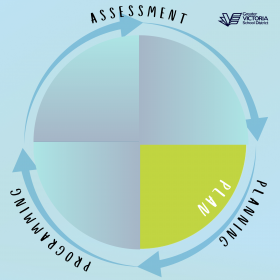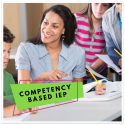
Planning starts with analyzing the assessment data gathered to develop hypotheses, wonders or questions that can support next steps. Based on the information gathered to date from a student file review, assessment data, and data collection on specific concerns, sample questions could include:
- Has a positive relationship been established with parent and student with key staff including Administration, Teacher, Education Assistant, Counsellor?
- Does the student feel safe and cared for at school?
- Is differentiated instruction and triangulated assessment in place?
- Does the student have multiple ways to access learning and demonstrate knowledge?
- Are classroom structures and routines clear and consistent?
- Have academic, behavioural, and social-emotional expectations been well-defined and clearly communicated?
- Is praise (5:1 ratio), acknowledgement and reinforcement, both academic and behavioural, provided for this student?
- Has the classroom environment (use of consistent visuals, schedule, work spaces) taken student needs into consideration?
- What targeted strategies have been implemented? What data has been collected regarding the effectiveness of these strategies?
Using questions to frame a collaborative problem-solving discussion as per the Student Support Continuum, the next step is developing a plan.
Planning should be collaborative and can take the form of being either formal or informal. Planning outcomes could include the development or revision of a learner profile, an CBIEP and/or a student support plan. It may also lead to requests for further assessments, a request for a Ministry Designation and the involvement of other educational partners.
** The search function can be used to locate a specific resource.

SBT Key Documents
Academic Planning
Communication Planning
Executive Functioning Planning – Under Construction
Medical/Complex Planning
Social Emotional Behaviour Planning

Referral App and Referrals

Designations

Competency Based IEP’s

Transition Planning


